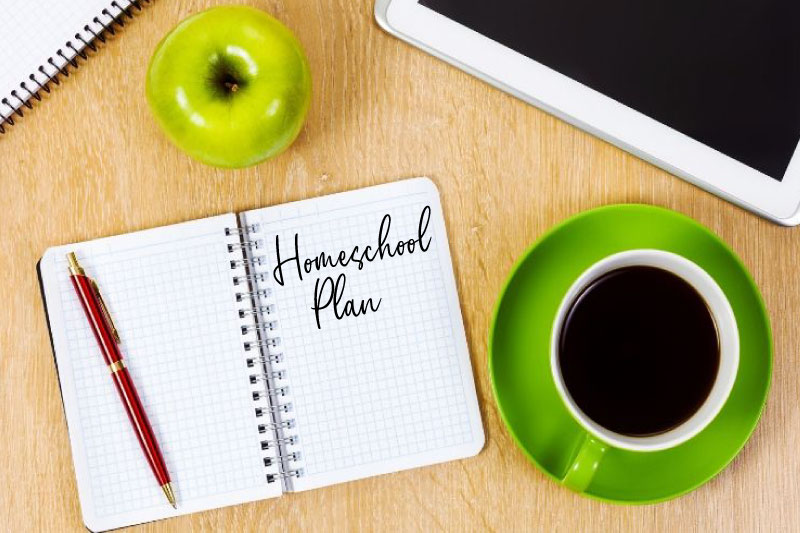Starting strong is how we all want to begin our homeschooling efforts. Right?
Some of us are excited about starting a homeschool year with new books, school supplies, field trips, and schedules. Others of us are still struggling with uncertainties and indecision. And many of us find ourselves somewhere in between.
Whatever category your family falls into,
let me give you a few tips
to make the start of this school year a good one.
Our family always began school after Labor Day. Starting in September helped us to feel like we had a full summer break and were now ready to put our "lazy days" and vacations behind us and jump in to a new school year.
If you’re preparing for a new school year but haven’t done some of the items listed below, I encourage you to take some time to consider the steps below to help you "start strong."
1. Set Some Goals
Does that sound trite or boring? If so, please reconsider.
Setting goals helps us have a vision and gives us something to strive toward. Goals also help us stay focused and on track.
Hold a fun family meeting to discuss your goals. I say “fun” because kids (and spouses) can get a little nervous when they hear a family meeting is being called, so make it a positive time, perhaps with some special treats to enjoy.
Allow each family member to offer suggestions of what some of their goals are for the school year and how they can achieve those goals.
Keep in mind that your family’s goals don’t have to look like any other family’s goals, and each child’s goals will look a little different, too.
Encourage family members to toss in anything from simple daily goals to big long-term dreams. The sky’s the limit here!
SIMPLE DAILY GOALS COULD BE:
- Getting through a whole day with no complaining about schoolwork
- Doing chores without being reminded
- Transitioning from digital screen time to more outside time
- Starting a weekly family night at home playing games and reconnecting
BIG LONG-TERM GOALS COULD BE:
- Doing something new (building a woodworking project, getting certified in scuba diving, learning to play an instrument, going on a mission trip, etc.)
- Growing in your walk with the Lord
- Doing a service project as a family
- Working toward achieving future plans after high school

2. Make a Plan
Now you can sketch out some details to fulfill your goals.
Think through your school year and what your days are going to look like.
- Will your day need to be scheduled around some outside classes and lessons your child will be taking?
- Will you be the chauffeur for extracurricular activities, requiring you to figure out naptime for younger children?
- What will I do with the toddler while I’m trying to school the older kids?
- How will you pay for those extras the kids want to do?
- Is this activity really what’s best for this child and/or our family?
- Am I willing to give up my garage space so my child can build something for woodworking class?
- What are you having for dinner? The crockpot or instapot is your friend!
- How can my child get a head start on college classes to save us money?
- What are other options if my child doesn’t want to go to college?
Working through these details and planning ahead make your school days – and school year – a bit smoother sailing.
3. Write Out Lesson Plans & Schedules
School days go much better when the teacher is prepared. Set aside time on a weekly basis to write out your week’s lesson plans and schedules.
I used a lesson planner book for each child and an open calendar on my desk. These tools allowed the entire family to know what was going on throughout the week or month and avoided “surprises.”

Lesson Planners
I tried several planners over the years, but my favorite (and the one I always went back to) was the blank one I could just fill in. When laid out open, the two pages equaled one week’s worth of lesson plans for six subjects. The planner had the subjects listed across the top with five large blank boxes under each subject, one box for each subject, each day of the week. This way, an entire week of lesson plans was in front of each child. This worked for all grade levels.
I would write each child’s daily lessons or tasks they needed to accomplish in each box. When they finished each subject’s tasks, they would put a check mark in that box. A quick glance told me what was done and what still needed attention for that day.
This also gave us room for flexibility. If an appointment came up and we needed to set aside our work for the day, the kids knew exactly where to pick up the following day or what they needed to double up on to get it all finished within the week.
Family Calendar
This is where we wrote EVERYTHING that was happening in the week/month. Appointments, field trips, vacations, Bible studies, music lessons, sports practices and games, date nights, events, activities, outings, etc., were put on the calendar.
If anyone wanted to know what was scheduled on any certain day, they just checked the calendar. To be perfectly honest, they still asked me first, and I would remind them, “Check the calendar!” Ha!
Schedules
I had a loose daily schedule. It kept us on track for the day but wasn’t so rigid that it controlled us.
Here’s what a daily schedule looked like for our family:
BEFORE 9am – Everyone had to get up, make their beds, get ready for the day (dressed, teeth and hair brushed), eat breakfast, etc., before 9am. I did not require a specific time to get up; I left it up to each child to figure out how much time they needed to have everything done and be ready to start school by 9am.
And, by the way, one of the first things I would do almost every morning was throw a load of clothes in the washing machine. It was easier to keep up with laundry this way.
9AM Bible time – We all met in the living room for this, and our studies looked different throughout the year. We would go through a specific study book, take turns reading through the Scriptures, or study a topic on our own that we wanted to learn more about. I didn’t want Bible time to become “just another school subject,” so I tried to make it interesting and continually changed it up.
After Bible time – We turned to daily lessons and book work.
Over the years, we had several different places where we did schoolwork, as we moved a few times due to my husband’s job. My favorite was always having a separate room designated just for school where the books, supplies, and sometimes messes could be left for the next day. I always sat with my kids for teaching time and then came and went as they did book work on their own. This allowed me to get housework done, tend to a baby or toddler, and stay on top of the progress being made in school that day.
1pm Lunch time – My husband always came home for lunch, so most of the time he would take his lunch break from 1:00-2:00. That would give us enough time to get our schoolwork done so we could have lunch prepared and on the table by the time he arrived.
After lunch – This was time for naps for little ones, reading, fun projects, outside play, games, errands, activities, lessons, chores, etc.
Bedtime – Make sure your kids are going to bed early enough to get plenty of rest (this goes for teens, too) so they don’t struggle getting up in the morning!
We allowed our kids to listen to audio recordings while drifting off to sleep. They listened to things like Adventures in Odyssey, My Story Hour (very good history stories and some Bible stories), Jonathon Park adventures, other books on tape or CD, and sometimes children’s Bible songs. Lots of history was learned from nighttime listenings!
Start Strong!

Remember, homeschooling is training for life, not just a list of books to do each year.
Learn to be flexible, but focused.
Love on your family.
Enjoy your school year!

Jill Oppman and her husband, Darren, are Homeschool Iowa board members.
She is a Homeschool Iowa Regional Representative and serves as the Homeschool Iowa Capitol Day Coordinator.
Darren and Jill have been married since 1985. They have four adult children who were all homeschooled, and they are now proud grandparents as well!

